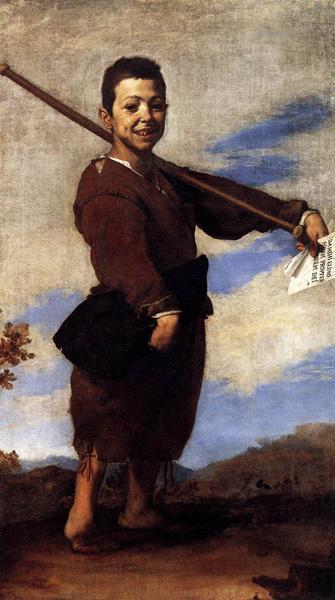Turkish doctors solve puzzle of old painting at Louvre
ISTANBUL

Through a careful inventory of the objective anatomical features portrayed by Spanish painter Jusepe de Ribera in his 1642 painting entitled “The Clubfoot,” Turkish doctor Kadir Abul proposes this young beggar may have had poliomyelitis. The scientific article about the issue was published in the American magazine Clinical Orthopaedics and Related Research in May.
He first saw the painting, which is kept in the Louvre Museum’s collection, on his friend’s social media account, Abdul, 36, told daily Hürriyet.
The doctor, who works at the Acıbadem Maslak Hospital Comprehensive Spine Center in Istanbul, said what drew his attention to the painting was the boy was holding a stick over his left shoulder and a paper in his left hand. He thought this stick could have been a crutch.
But clubfoot patients do not need a crutch, he said. “I was excited and measured the size of the stick on the computer. It was right under the boy’s armpit. The stick was not flat but had curves. And the boy’s walk had the attributes of poliomyelitis disease,” said Abul.
“The paper was read in Latin ‘Da mihi elimo/sinam propter/amorem dei!” [Give me alms for the love of God]. This paper was a document given to beggars by the government during that period in Naples. Thanks to this document, beggars received the right to beg and this stick made them appear even more helpless,”said the doctor.
Abul said that the painting was made in 1642 and poliomyelitis was defined in 1789.
“There is a hiatus of 150 years. The painter drew it but did not know about the boy’s disease. We think it is poliomyelitis but we do not have MRI or EMG results to prove it. This is why the secret details in the painting gain importance. This is what we did,” he said.
The doctor first presented the work at the Turkish National Orthopedic Congress. Then the work turned into an academic article with the contributions of doctors Abdulhamit Mısır and Fettah Büyük. After a lengthy period of correspondence, the copyright was taken from the Louvre Museum and the article was published in the medical magazine.
Abul and his team said they would request from the Louvre Museum to change the name of the painting.
















